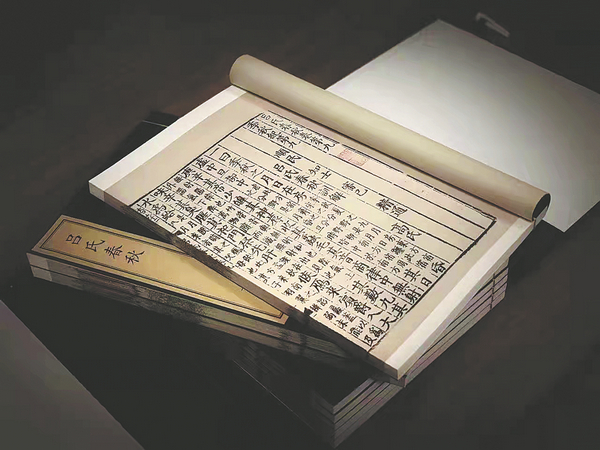A page from history
 0 Comment(s)
0 Comment(s) Print
Print E-mail China Daily, January 7, 2022
E-mail China Daily, January 7, 2022

It is also in this mill that a special paper known as ciqing (ceramic blue) for the cover of such books is made. Again, the technique for making this kind of paper had also long been lost before it was reinvented at the mill.
Instead of modern printers and printing technology, updated traditional lithography is used for printing the books. Raw mineral pigment is applied rather than normal printing ink. Raw mineral materials are ground into fine powder, to which resin is added. Using such pigment, the ancient classic books, the contents of which were handwritten by ancient scholars on the pages, can be kept almost intact. The color, texture, even the marks left by bookworms and the uneven edges of Chinese characters left by the writing brush from the original classic books, are kept almost exactly the same.
With the printing paper and technology of lithography, Jiang Fangnian established Huabaozhai and launched his business of printing thread-bound ancient Chinese books, which are known in Chinese as xianzhuangshu (thread-bound books). The development of the mill laid foundation for the printing of The Hundreds of Ancient Chinese Classic Books Remade.
This project was carried out under the direction of the cultural committee of China Democratic League Central Committee and the Ancient Books Preservation and Conservation Association of China. It has been listed by a State-owned cultural enterprises assets supervision and administration leading team as one of the programs for spreading China's book culture.
The series of books contains 102 titles, one from the Tang Dynasty (618-907), 38 from the Song Dynasty (960-1279), one from the Jin Dynasty (1115-1234), three from Mongolian editions, 18 from the Yuan Dynasty (1271-1368), 30 from the Ming Dynasty, and 11 from the Qing Dynasty (1644-1911). They were selected by experts of ancient books. The whole set comprises 1,152 books.






Go to Forum >>0 Comment(s)